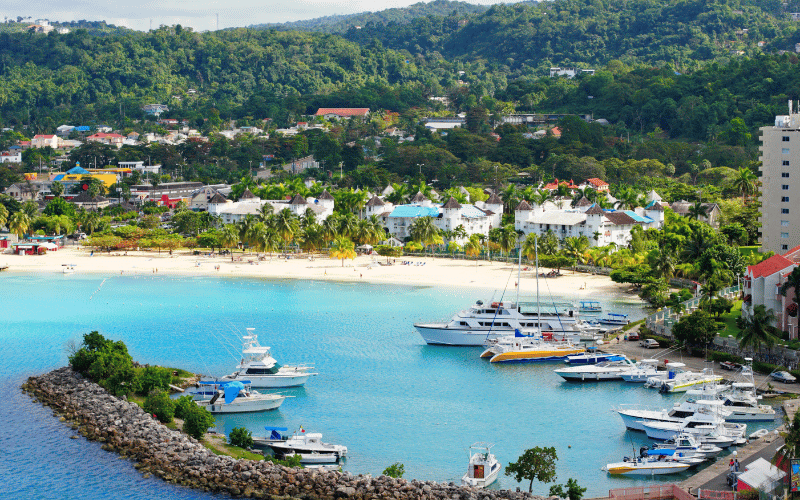
JAMAICA
This blog serves as your all-access pass to the island’s most breathtaking beaches, offering insights into the best spots for relaxation, adventure, and everything in between. We share our love for Jamaica’s blue waters, soft sandy beaches, and the rich cultural backdrop that enhances every beach visit. Discover hidden bays, popular snorkeling spots, and practical tips for a seamless Jamaican beach experience.
Quick Facts About Jamaica
| Category | Facts |
|---|---|
| Location | Caribbean, south of Cuba and west of Haiti. |
| Borders | None (Island nation). |
| Climate | Tropical, with hot and humid weather, tempered by sea breezes. |
| Population | Approximately 2.9 million (2023). |
| Official Language | English. |
| Currency | Jamaican Dollar (JMD). |
| Capital | Kingston. |
| Major Industries | Tourism, bauxite/alumina, agriculture, and manufacturing. |
| Religion | Predominantly Christianity (Protestant), with Rastafarianism and other faiths. |
| Time Zone | GMT-5 (Eastern Standard Time). |
| National Symbols | The Doctor Bird (Swallow-tail hummingbird), the Lignum Vitae tree, the Black, Green, and Gold Flag. |
Geography And Environment
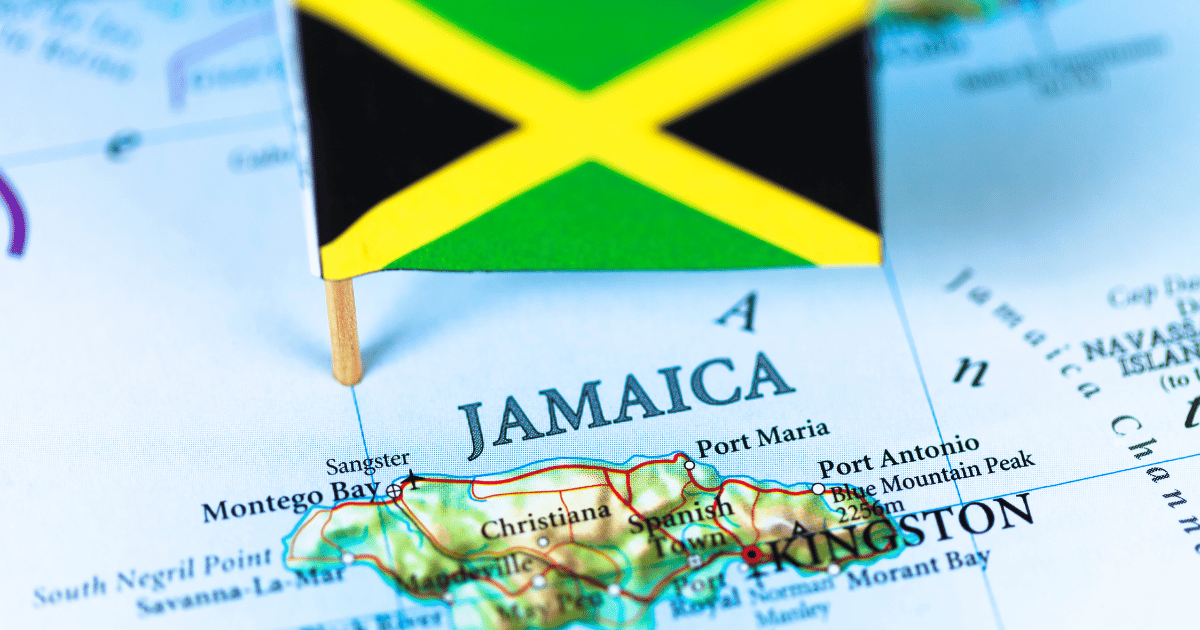
Major Physical Features
Jamaica is a land of contrasts. It’s a mountainous island, with the Blue Mountains standing tall in the east. The Blue Mountain Peak, reaching 2,256 meters, is the island’s highest point. Alongside these mountains, you’ll find limestone plateaus and karst landscapes that shape much of Jamaica’s terrain. The island also has a network of rivers, including the Black River and Rio Grande, which carve through the landscape and add to its natural beauty.
Seasonal Variations
The big island’s tropical climate brings warmth year-round, with temperatures usually between 22°C and 31°C. It has two main seasons. The wet season lasts from May to October, bringing rains that refresh the landscape. The dry season, from November to April, is the best time for beachgoers and tourists seeking sun. Hurricanes are a concern from June to November, but their impact varies, sometimes sparing the island and other times causing significant disruptions.
Natural Resources
The Caribbean Jewel is rich in natural resources. Bauxite is the most significant, with the island being one of the world’s top producers. This mineral is key for the global aluminum industry. You also find limestone, gypsum, and marble here, contributing to construction and industry. The fertile soil supports agriculture, with sugar, bananas, coffee, and spices among the main crops. These resources are vital to the island’s economy and help sustain its way of life.
Environmental Challenges
The island faces tough environmental challenges. Deforestation is a big issue, as trees are cleared for development and agriculture. Coastal erosion is another concern, threatening beaches and coastal communities. Pollution, both on land and in the sea, is also a major problem. The coral reefs, crucial for marine life and tourism, are under threat from overfishing, pollution, and the effects of climate change. Waste management is a struggle, especially in cities, leading to water and soil contamination. These challenges are ongoing, with efforts needed to protect the land of Irie’s natural environment.
History and Culture
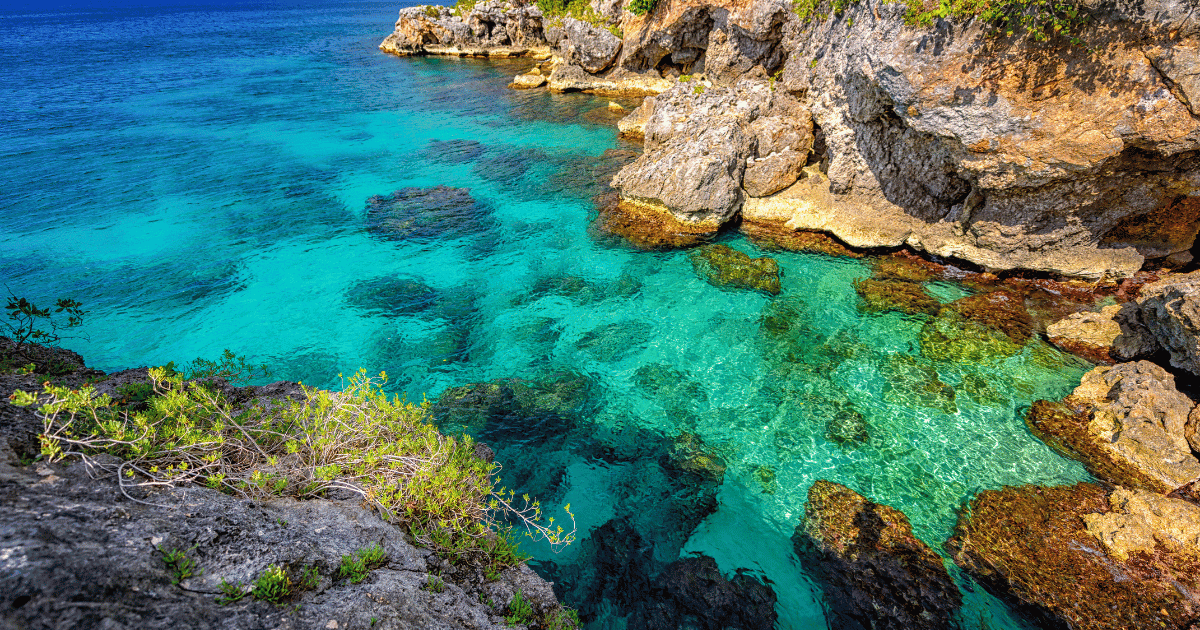
Historical Background
Jamaica’s history is marked by the arrival of the Arawak and Taino indigenous peoples, who settled on the island around 600 AD. Christopher Columbus claimed this Caribbean gem for Spain in 1494, but it was later captured by the British in 1655. The coconut paradise became a major center of the transatlantic slave trade, with enslaved Africans brought to work on sugar plantations. The island gained independence from Britain on August 6, 1962, and has since developed a rich cultural identity, particularly known for its contributions to music, such as reggae.
Key Historical Events
• 1494: Christopher Columbus lands in Jamaica, claiming it for Spain.
• 1655: The British captured the island from the Spanish.
• 1838: Slavery is abolished in Jamaica, leading to significant social and economic changes.
• 1930s: The Rastafari movement begins, deeply influencing Jamaican culture and identity.
• 1962: The island gains independence from the United Kingdom, becoming a member of the Commonwealth.
• 1970s: Jamaica experiences political turbulence and economic challenges, with widespread social movements and the rise of reggae music globally. • 1980s-Present: Jamaica continues to influence global culture through music, sports, and its vibrant tourism industry.
What Is Unique About Jamaica
Music and Cultural Influence
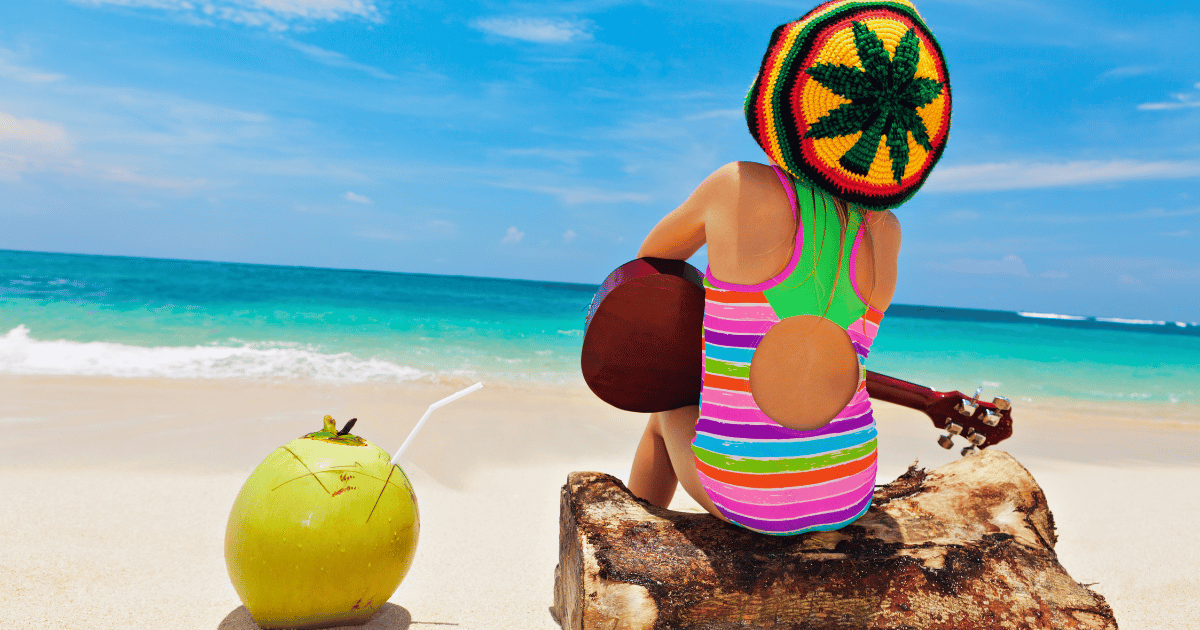
The Birthplace of Reggae
Reggae started in Jamaica, blending traditional folk music, ska, and rocksteady. It began in the late 1960s, reflecting the struggles and hopes of its people. Reggae’s rhythms and messages quickly spread, becoming the voice of the island’s culture.
Globally, reggae made waves. Bob Marley, the most famous reggae artist, turned it into a worldwide movement. His music spoke of peace, love, and resistance. Today, reggae is loved across the globe, influencing everything from fashion to political movements.
The Rastafari Movement
Rastafarianism started in Jamaica in the 1930s. It began as a spiritual and social movement among the descendants of enslaved Africans. Rastafarians believe in the divinity of Emperor Haile Selassie I of Ethiopia. The movement stresses a return to African roots and a life lived in harmony with nature.
Rastafarian culture shapes much of Jamaica’s identity. You see its influence in the music, especially reggae, in the way people speak, and in the lifestyle. Dreadlocks, the ital diet, and spiritual practices all come from Rastafarian beliefs and have become symbols of Jamaican culture.
The island’s Contribution to World Music
This tropical paradise didn’t just give the world reggae. Ska and dancehall also came from this island. Ska, with its upbeat tempos, set the stage in the 1960s. Then came dancehall, with its bass-heavy beats and fast rhythms, which exploded in the 1980s. Both genres have deeply influenced music worldwide, inspiring everything from punk to hip-hop.
Music festivals on this Yahman island, like Reggae Sumfest, are major events. They celebrate Jamaican music and culture, drawing fans and musicians from around the world. These festivals are not just parties; they’re a way for Jamaica to share its rich cultural heritage with the world.
Jamaican Cuisine: A Unique Blend of Flavors

Traditional Dishes
Jamaican food is famous for its bold flavors. Jerk cuisine is at the heart of it. Jerk chicken and pork are marinated in a blend of spices, including allspice and Scotch bonnet peppers, then slow-cooked over pimento wood. This method gives the meat a smoky, spicy kick that is unmistakably Jamaican.
Ackee and saltfish is the national dish of Jamaica. It’s a breakfast staple made from the ackee fruit, sautéed with salted cod, onions, and peppers. This dish reflects the island’s history and resourcefulness, using simple ingredients to create something uniquely Jamaican.
Fusion of Cultures in Jamaican Food
Jamaican cuisine is a melting pot. It blends indigenous, African, and colonial influences. Indigenous people introduced cassava and corn. Enslaved Africans brought okra, yams, and cooking techniques. The British and Spanish added their own touches, like meat pies, which evolved into Jamaican patties.
Street food is a big part of life in Jamaica. Vendors sell patties, spicy meat-filled pastries, to people on the go. Festival, a sweet fried dough, is a common side dish. Ital food, rooted in Rastafarian culture, focuses on natural, plant-based ingredients, offering a healthy, flavorful alternative.
Rum and Beverages
Jamaica’s rum is world-renowned. Rum production began in the 17th century when sugarcane plantations were widespread. The island’s rum is known for its rich, bold flavors. It plays a key role in Jamaica’s economy and is celebrated worldwide.
The island also boasts a range of popular drinks. Rum punch is a favorite, mixing rum with fruit juices and spices. Ting, a grapefruit soda, is a refreshing choice on a hot day. Blue Mountain Coffee, grown in Jamaica’s Blue Mountains, is one of the most sought-after coffees in the world, known for its smooth, mild flavor.
Sports and Athletic Excellence
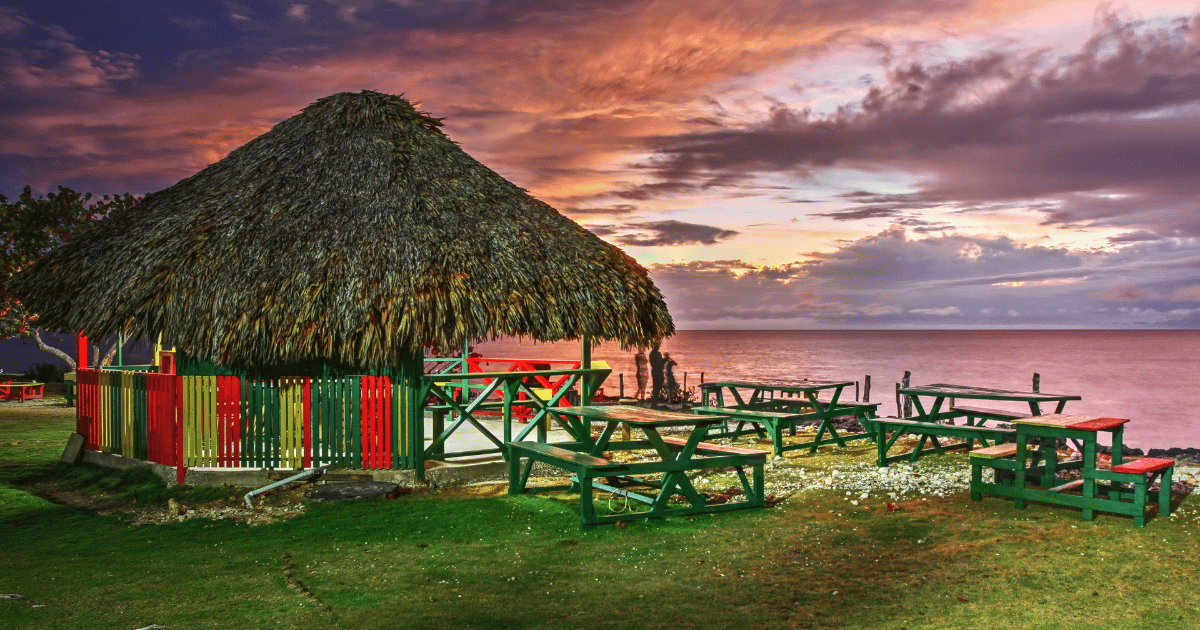
Track and Field Dominance
Jamaica is a powerhouse in sprinting. The Land of All Right has produced legends like Usain Bolt, the fastest man alive, and Shelly-Ann Fraser-Pryce, known for her incredible speed and consistency. These athletes have not only won numerous Olympic and World Championship medals but have also set world records that inspire sprinters worldwide.
Its impact on global athletics is profound. The country’s success in track and field has put it on the map as a breeding ground for world-class sprinters. This dominance has inspired countless young athletes, both in Jamaica and around the globe, to pursue careers in athletics, particularly in sprinting.
The Role of Cricket
Cricket has deep roots in the reggae island, introduced during the colonial period. It became a symbol of national pride and unity. The sport flourished, especially after Jamaica gained independence. Cricket fields became gathering spots where communities came together, fostering a strong cricket culture.
The big island has significantly contributed to the West Indies cricket team, producing legendary players who have left a lasting legacy in international cricket. The team, representing multiple Caribbean nations, has achieved great success, with Jamaican players often at the forefront, helping to establish the West Indies as a force in the cricketing world.
Community Sports and Local Heroes
Grassroots sports programs are vital in this land of springs. These programs nurture talent from a young age, providing opportunities for children to engage in various sports, from track and field to football. They play a crucial role in identifying and developing future stars who may go on to represent Jamaica on the world stage.
Jamaica City Guides
Choose the city you want, and you will be taken to the appropriate information and reviews. With these guides, we are confident that you have the optimal source of information to find your next dream destination.
